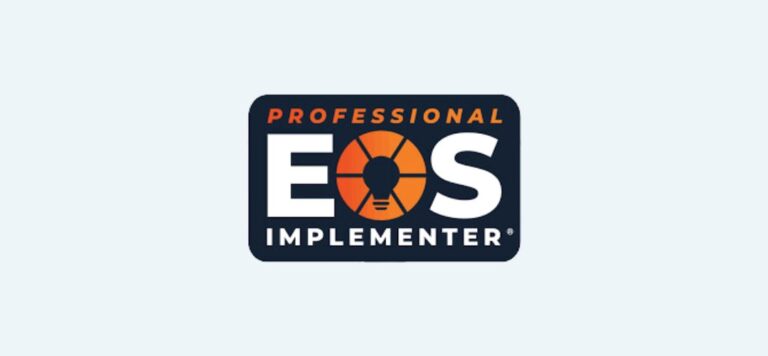“MAKING IT BIG” BY SOLVING SMALL PROBLEMS
WRITTEN BY SHERRY DEUTSCHMANN
“Big.” “Unsolvable.” “Huge.” “Audacious.” If you’re thinking of starting a business, it’s likely that you’ve been told that you’ve got to find a solution for some seemingly insurmountable problem in order to have a successful launch. But maybe they’re wrong.
Who am I to suggest that this popular wisdom might not be right for you? That pursuing a small problem might be a good strategy instead? Well, I’m someone who tackled a simple problem – a small problem really, but did it in such a decisive, drop-the-mic way that our “solution” launched a company that grew to $40 million, debt free. With only 50 employees.
Here’s the backstory: I was working in sales for company that printed and mailed bills for hospitals, but I was stuck. We were losing customers as quickly as I added them, creating an environment where I was constantly putting out fires, apologizing to customers for our screw-ups. I had an epiphany about how the culture of the company was negatively affecting our service so I approached my boss with ways we could improve morale and thereby improve service. His reaction? A brush off: “Sherry, you don’t know anything about business. Just go sell another account.”
In frustration, I quit that job and decided to start my own business competing with him. I had only a high school education and no formal business training. Not only had I never written a business plan…I’d never even read one either! But a few hours later, I was bounding out of Barnes & Noble with an armload of business books. In a few days, I put together a simple business plan – 10 or 12 pages in length.
Excited, I took my quickly crafted blueprint to a company that specialized in reviewing business plans shaping strategy. It was a humbling experience.
“There’s nothing here,” the two gentlemen said. “There’s nothing special. The industry is quickly maturing, with several huge companies already involved. It would be practically impossible for you to compete with them effectively. Your biggest asset is your knowledge of the industry and that you’re well known within it – but that’s not enough.”
“You must either find a way to do something that no one else is doing,” they went on. “Or solve a problem that no one has solved. Or forget about this business.”
For three days and nights, I kvetched over this problem. How could I find traction in a mature market? What challenge was nobody else tackling? Where was there enough room to give me a foothold?
I thought back to the sales call I had made over the years and a clear persistent pain point emerged: returned mail. That is, bills that were sent to the patient but were returned to the hospital undelivered because of a bad address. In the whole scheme of things, this is really a tiny problem for hospitals, but it had a ripple effects that couldn’t be ignored. Here are a few:
- When the bills arrive back with the words “UNDELIVERABLE” emblazoned across the envelope, the hospital personnel don’t have the resources to find the patient, so they turn the account over to a collection agency. The collection agencies have better methods for finding good addresses, so within a few days, the patient who’d never received a bill now receives a collection letter. Angrily, they call the hospital to complain and the relationship begins to erode. The hospital’s reputation is damaged.
- The patient’s credit rating is dinged too because they were turned over to collections as “bad debt.”
- The collection agency does indeed collect the debt, but because the agency takes a percentage, the cash-strapped hospital takes a financial hit in addition to the reputational hit.
- And finally, because it takes so long for a piece of undeliverable mail to be routed back to the sender and then over to the agency and a new letter to go out, several weeks have been added to the revenue cycle, adding insult to injury to the healthcare facility.
On a mission now, I cold-called dozens of hospitals to probe the problem. One large healthcare system escorted me into a locked storage room filled with bins and boxes of bills gathering dust, like something out of the final scene of Raiders of the Lost Ark. Tens of thousands of statements just stacked there, not collecting revenue. I knew I’d found the small problem I could solve.
After a few weeks, I had the solution.
I excitedly started called hospitals asking, “If I can solve this problem for you, can I have your business?” My favorite response came the CFO of a large healthcare system: “This is the quintessential no-brainer. If you can do what you say you can do, then of course we’ll move our business to you”. And LetterLogic was born!
What was the solution? I offered to build an automated way to correct the patient address BEFORE the bill was printed and mailed, thereby greatly increasing deliverability, and then I sweetened the deal by offering a Returned Mail Buy-Back Guarantee. Yes, I told them I’d give a full refund for any piece of mail that was returned to them for any reason.
Later, as my company grew by leaps and bounds and was named an Inc. 5000 Company (one of the fastest growing privately owned US businesses), the Returned Mail Buy-Back Guarantee became less important. By that point, our reputation was solid (a result of an incredible culture that you must read about) and we no longer had to lean on the Guarantee as our market differentiator. In fact, if you’d ask a customer why they were with us, it is likely that none of them would even mention returned mail. Partially because we’d solved the problem for them already (you don’t need a new mouse trap if you don’t have mice!) and partially because there were many other reasons to choose us at that point.
You might be wondering if any of our competitors tried to copy our Guarantee, thereby making us not so unique. Yes, once or twice for very short periods of time. But because they weren’t also doing all the things we did behind the scenes to ensure the mail got to the right address, they were unsuccessful and quit just as abruptly as they started.
What’s the lesson here? To build something great, focus on problems that nobody else is paying attention to…and sometimes that is a seemingly small issue. While my competitors were spending millions and millions of dollars pursuing digital delivery of statements and ecommerce solutions, I devoted my attention to a nagging little problem that got my foot in the door. And once I won their confidence in getting rid of their little pesky problem, they started trusting me with bigger problems.
Start today with a small idea and “make it big”.








